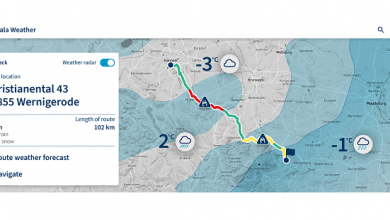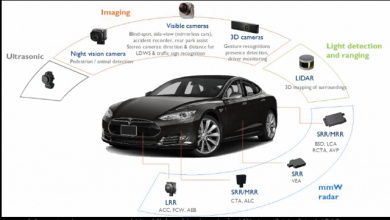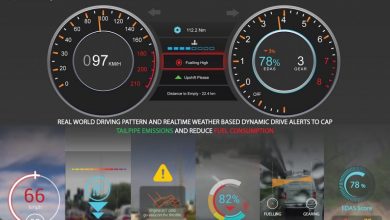Achieve Destination Zero accident using ADAS technologies

According to World Health Organization (WHO) 2018 ‘Death on the roads report’, approximately 1.35 million people die each year due to road traffic accidents in India alone estimated deaths is 299,091. As per the Indian road ministry website 467,000 accidents were reported in 2018. Destination Zero is an aspiration to achieve zero accidents, zero pollution and zero congestion by automotive manufacturers, governments, environmentalists and other industries around the world. There is a growing demand for more vehicles on the roads to aid the movement of people, goods and services. Consequently, it is becoming complicated and vital to achieve safety of people and countryside animals on roads. Accidents do not only impact the individual involved and their families, it can also effect the GDP of the country.
It’s been more than a century since the first traffic lights in the world seen on London’s roads to save people’s lives. As the decade’s pass, we have developed traffic laws and complex infrastructure to avoid accidents worldwide. In the modern world we still have increased number of accidents and deaths on roads. Developed countries in the Europe have good infrastructure and stricter laws but we still see 50.5 accident fatalities per million people. This highlights existing traffic laws and infrastructure is not enough, we need to make vehicles and roads safer than before with the help of niche technologies to achieve Destination Zero accidents.
Human senses are not always accurate and that human error is often the cause for many accidents on the roads, there are many studies around this. To make vehicles safer, advanced driver assistance equipment can be used to alert, warn and aid the driver to avoid accidents. We have started using old known camera and radar technologies to make modern and advanced vehicles. The automotive manufacturers may have started late but never the less in 21st century we have engineered them for luxury brands but this is not enough to achieve destination zero accidents. Safe technology shall be part of every all vehicles in all countries. Safety must become affordable and it shall be primary right for every individual born in any civilised nation.
Human error is possible in every activity includes driving no matter how advance the infrastructure and laws are, this is exactly the primary focus and that’s why we need higher aspirations like destination zero. Errors can be reduced by automating driving activities using Advance Driver Assistance systems (ADAS) and Autonomous vehicles, ADAS is the first step in that direction. There are various levels of autonomy within the industry, starting with level 0 and ending with level 5. Level zero being the lowest, with just alerts to the driver when threat is detected and level 5 being the highest for full driving automation without driver intervention.
There have been a handful of advance driver aid systems available in market over the past 2 decades such as Autonomous Emergency Braking (AEB) to brake when threat is detected in the vehicles driving path, Emergency Lane Keeping to maintain the vehicle within the lane to avoid unintentional drift due to driver fatigue, Blind Spot Detection to detect unseen objects around the vehicle etc. Alert systems help the driver to be attentive when a threat is detected in the vehicles path. If the driver does not take corrective action for alerts actuators such as braking and steering systems receives automatic request to apply brake or steer away from threat.
To develop ADAS systems, at-least a sensor or combination of sensors are required to detect a threat. A simple block diagram below describes a pedestrian walking into the vehicle path. The camera and radar sensors detect the object and the processing block identifies if the object is going to be a threat. If the driver does not detect and does not take corrective action, then the processing unit will pass on the request to the brake control block to apply the brake immediately to avoid the collision.

These systems are getting more popular and are becoming a unique selling point for other equipment manufacturers (OEMs). Having no extra assistance is no longer an option in many countries as statutory laws getting stricter to have safety systems in vehicles to reduce fatalities on roads. Automotive standards like New Car Assistance Program (NCAP) provides certification to make vehicles more sellable by proving they are safer in different scenarios and environment. ADAS systems have already proven to have started saving lives on roads; researchers say around 40% of potential accidents can be reduced by integrating them on passenger vehicles.
Challenges and possibilities:
Unfortunately, as safety increases so does the price. It’s a challenging problem for OEMs and end customers. Development, integration and validation is getting expensive due to complex distributed ADAS systems. Government policies helping OEMs and supplier to come together to build a sustainable ecosystem to reduce safety cost and increase affordability. Unless safety becomes mandatory people tend to treat it as a second priority since it is an invisible factor while buying a vehicle. This is human nature.
Robustness of systems are at the mercy of the advancement of sensor technology. Sensors have limitations in their hardware and software which causes false or missed detection of objects, meaning false braking or steering for non-existent threats, or missed braking or steering for real threats in the vehicles path. Lidars have brought hope to resolve these limitations we have in the camera and radar; it can scan the environment more precisely and classify objects with high confidence. Challenges are not just limited to sensors but it extends to the systems engineering activities to develop reliable systems which includes developing well thought through functional and non-functional requirements (e.g. performance, maintenance, reliability etc.). Systems engineering is a wide discipline and enables engineers to understand systems systematically to develop complex and distributed systems. Having reliable systems is vital to increase the confidence on these systems. As technology advances systems are becoming more reliable and sustainable to achieve destination zero.
To achieve zero accidents, forces need to be combined such as OEMs, suppliers, government and researchers need to come together seamlessly to overcome challenges. There are ADAS platforms already in the market that are capable of achieving level 3 automation after great research and big capital investments. OEMs working with tier 1, 2 and 3 suppliers as partners, is the key to success. No single OEM or supplier will be able to achieve Destination Zero aspirations on their own. Many OEMs and suppliers have already realised this and joint ventures are in place to work-out challenging areas by complimenting each-others weakness. Governments are also funding to build facilities for research and validation of ADAS and autonomous features development.
Having excellent systems is not enough, educating users is also key to making the most out of ADAS systems and to avoid abuse of the system. There are plenty of sources available online and offline, it’s the responsibility of users to go through them. There have been incidents where the user has abused systems by not following safety cautions which have led to hazardous events. One such example is the driver falling asleep after setting the vehicle into auto pilot mode in a Tesla vehicle. It’s also the responsibility of the OEMs to consider user behaviours into system design to reduce the abuse and increase the safety. There are regulations such as United Nations Economic Commission for Europe (UNECE) and Federal Motor Vehicle Safety Standard (FMVSS) in the U.S. in place to ensure systems do provide enough warning to users when not attentive or not placing their hands on the steering wheels continuously.
Human machine interfaces (HMI) play an important role to make the systems more co-operative with the driver. It’s essential that systems don’t fight the driver, if so driver becomes irritated and loses confidence on systems. HMI includes audio and visual warning, having an appropriate and natural level of warning & alert to make sure the driver understands the information provided to take control of the system and situation to avoid hazardous events. HMI can be used as a tool to teach the driver how to use systems. Partial learning could lead to inefficient use of the system. This may result in not meeting the required purpose of it in the vehicle.
After all development on the left side of product development V cycle the next big challenge is validation. Every ADAS feature could have hundreds of scenarios on roads, parking spaces etc. To build sensible scenarios you need to consider the environment, road type, objects around the vehicle, weather conditions and other factors. A combination of all these factors and its variants could result in thousands of scenarios. Increase in affecting factors, increases complexity of validation. Imitating these environments with limited resources and time is a great challenge. After all the testing is complete, analysis of huge data and generation of a meaningful report is exponentially time consuming and a huge challenge at the moment for the whole industry to deliver reliable systems. Performing validation is not limited to specific location, it varies from country to country to account for weather, driving pattern and driver behaviour. There are plenty of simulation and emulation tools in market to validate software, hardware and vehicle itself. It’s much quicker but it always comes with the risk that in a virtual environment it’s not possible to take into account all real noise factors.
Insurance companies started taking advantage of ADAS systems fitted in vehicles to get to know how safe the vehicle is to protect occupants which in-turn saves the insurance companies money on what they pay post accidents. This is a win-win situation for both vehicle and insurance owner, it’s not just that insurer’s pay less bills but the insurance for such vehicles are also relatively less compared to vehicles having no ADAS systems.
Conclusion:
Safety should not be limited to luxury vehicles; it is important for each individual to have the option to be safer by using ADAS systems. Destination Zero accident using ADAS technology do save lives when we have sustainable eco system between OEMs, Tier 1,2,3 suppliers, Government and researchers. Reduction of accidents by 40% is an excellent achievement of ADAS technology which is leading us towards Destination Zero accident aspiration. Non-traditional automakers are proving this is possible even quicker meaning we will not be required to wait for decades to save lives. Technology is evolving to achieve L4 and L5 automation, it is possible that it will be in our vehicles within in the next 2 decades, not too far into the future.
References:
- https://ec.europa.eu/eurostat/statistics-explained/index.php?title=Road_safety_statistics_-_characteristics_at_national_and_regional_level&oldid=463733
- https://app.powerbi.com/view?r=eyJrIjoiMjIzMTY5MmQtNjZmZC00OTAyLTkzOGMtYWEyOWYwZDE1YjU2IiwidCI6IjViN2ExMDIzLTI1ODgtNGU3Yi05MjZlLTgwYzllY2EwNWQ4OCIsImMiOjEwfQ%3D%3D
Author:
Manu Gowda has enriched experience in systems engineering discipline with management skills underpins to emerge as a successful leader. Provided technical leadership in building & guiding successful teams to develop complex distributed systems. Objective is to work towards achieving Destination Zero with strongly believed principles i.e. SMART objectives, leads by example, team work and gets it done.
Published in Telematics Wire




